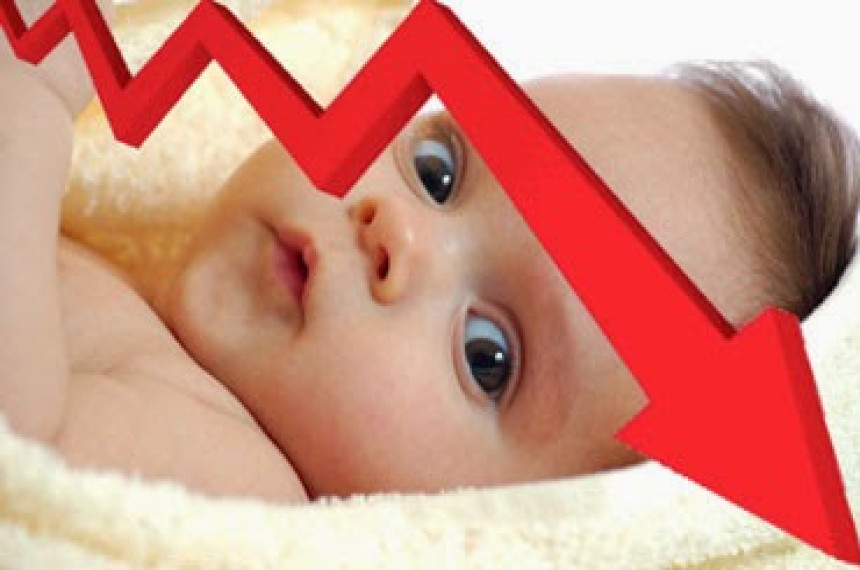
31
Mar
Elon Musk is spending millions on ‘population collapse’ research
The New York Times recently ran an opinion piece on how low birth rates will supposedly lead to population collapse. The article features a rather alarming graphic, which shows a steep population drop and apparent human extinction shortly after a peak at 10 billion in 2085.The author, Dean Spears, a professor of economics at the University of Texas, Austin (UT Austin), also wrote the draft paper the article is based on, which has not yet been peer-reviewed and published in a scientific journal. The paper looks at far-future population projections under three different below-replacement fertility rate scenarios. It features the same alarming population spike graphic as the New York Times article, but unlike the Times, it includes a full timescale, which reveals the decline actually extends over 2,000 years. Not quite the sudden crash the Times article made it out to be. If and when the paper is peer-reviewed and published, it would merit a deeper exploration, but for now, all we need to know is that far-future population projections are essentially guesswork, due to the huge uncertainty involved. We simply cannot make reliable assumptions about the reproductive behavior (or longevity, mortality, etc.) of people whose great-great-great grandparents have not yet been born.In light of these caveats, it is a little surprising that The New York Times published Dr. Spears’ op-ed, but what is more troubling is that neither the article nor the paper discloses that the research was funded by none other than tech billionaire Elon Musk. Musk frequently makes headlines with his concern over low birth rates, and has claimed they present a “much bigger risk to civilization than global warming.” A Bloomberg investigation revealed that in 2021, he donated $10 million dollars to UT Austin for the development of the Population Wellbeing Initiative (PWI), which is headed by Dean Spears.According to their website, PWI is “a network of researchers who conduct foundational research in economics, demography, and social welfare evaluation,” yet here too there is no mention of Musk’s funding. A quick look through some of their recent research reveals a penchant for cornucopianism and effective altruism. Cornucopianism argues that technological innovation enables infinite growth, and that ever more people leads to ever more progress. Effective altruism (EA) is a relatively recent philosophical movement based on utilitarianism that aims to maximize well-being and minimize suffering on a global scale, and far into the future (longtermism). An excellent goal, but one which entails some strange and problematic conclusions. A classic example is the argument that a huge population of miserable humans is better than a small population of happy humans, because an individual happiness score of say, 1 out of 10, multiplied by 20 billion yields higher “total happiness” than a score of 9 out of 10 multiplied by 2 billion. Dean Spears clearly subscribes to this bizarre reasoning, lamenting in his Times article the “tens of billions of lives not lived over the next few centuries — many lives that could have been wonderful.”Perhaps my brain is just not philosophically-inclined enough to make sense of recent interpretations of EA, but I do know that they do not seem compatible with environmentalism. EA only assigns value to sentient beings that are known to perceive suffering, so under this system, there is little ethical objection to eliminating other precious organisms, especially if this action is subjectively perceived to increase “total happiness.” In practice, this could look like a forest being cut down to build a mosquito net factory. It gets worse — in his book What We Owe the Future, University of Oxford professor and EA pioneer William MacAskill suggests that the human-driven sixth mass extinction might actually be a good thing because wild animals tend to have difficult lives: fewer struggling wild animals = greater total well-being. Elon Musk has endorsed the book, tweeting, “This is a close match for my philosophy.” I digress, but The Sierra Club has published a great piece on the environmental implications of EA for those interested in learning more.Underpopulation concerns and EA are particularly popular among wealthy white men like Musk, perhaps because they justify the push for infinite growth — more people, more wealth, more space exploration, and a continuation of the business-as-usual that favors the rich. However, claiming that people choosing smaller families will lead to human extinction is deeply problematic, as it opens the door to potential human rights violations. Several nationalist governments that are concerned about their countries’ low birth rates are already trying to restrict women’s ability to prevent pregnancy and birth — see Population Matters’ report on coercive pronatalism for more on this. Pronatalism is also gaining traction in the U.S., where it is gathering an ugly following of eugenicists and far-right influencers who want privileged white people to have more babies.Population collapse fearmongers also distract from the real issue: our current population of 8 billion and counting is severely straining our planet’s ability to sustain life. A recent paper published in Science Advances found that we’ve already breached six of nine planetary boundaries, beyond which the threat of environmental collapse is high. And we’re still adding around 70 million people every year, with the UN projecting that we will exceed 10 billion this century. In light of these facts, it’s absurd that some are so worried about a shortage of people. The real threat of population collapse is from escalating environmental crises, disease, and conflict due to ecological overshoot, not from people choosing to have fewer children. In fact, it is precisely the trend towards lower fertility rates that presents a key way out of the mess we’ve created.Elon Musk could do so much good if he cared as much about the health and well-being of the people and other species alive today as he does about population size hundreds of years from now.

